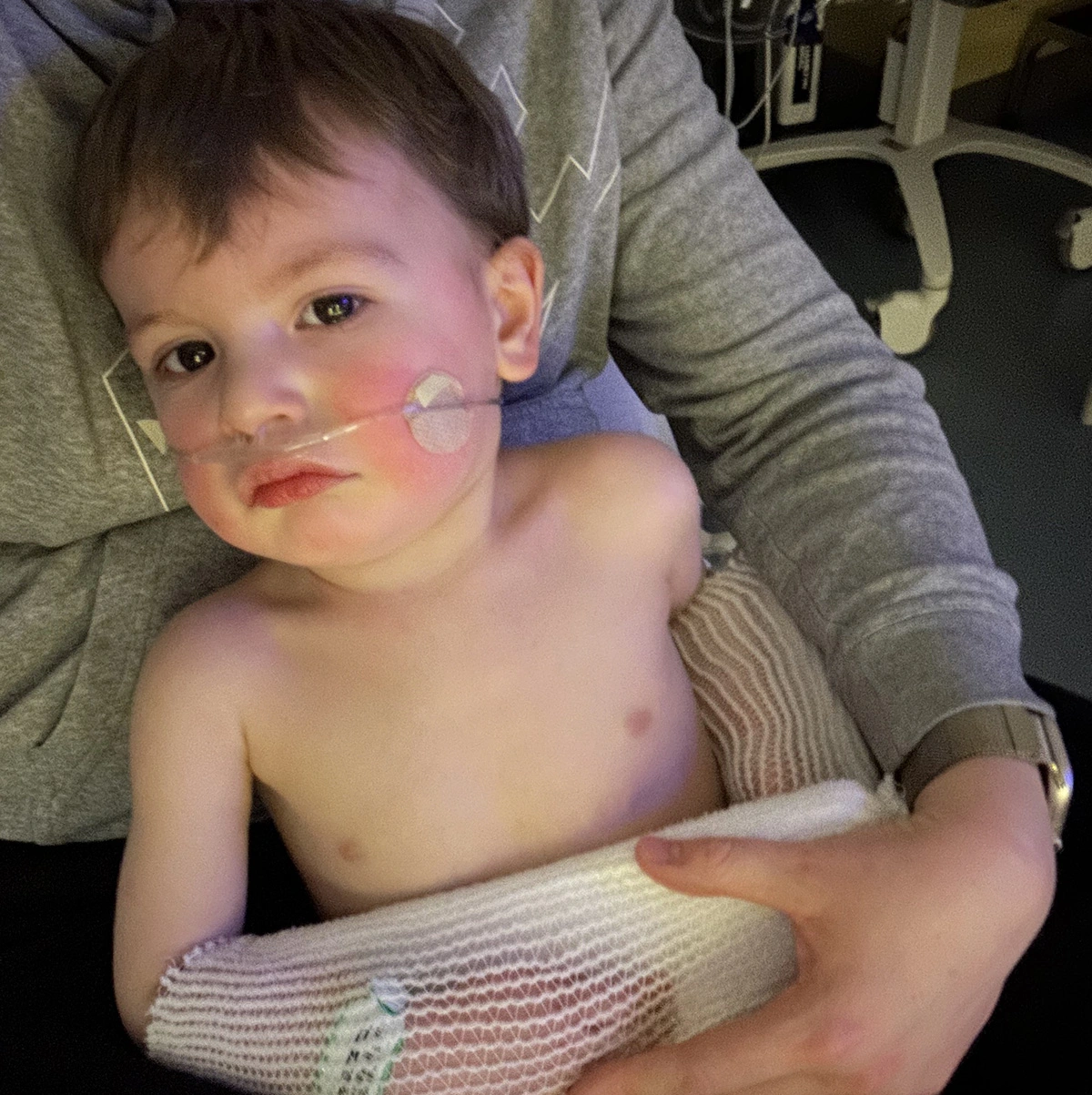It started with a bad cough and fever. Taj was 12 months old and, until that time, had been a relatively healthy baby. Like most colds and flus, I expected the illness to peak around 3-5 days and then he would start getting better. But that didn’t happen, he continued to get worse. He had been struggling breathing, so I called the advice nurse, and they recommended I bring him to the emergency department immediately. When we got there, it was like he wasn’t sick enough. His temp wasn’t that high, blood oxygenation was alright, so they gave him Tylenol and sent us home.
The next morning he was even worse, so we took him to a different hospital. They tested him for RSV and the test came back positive. They gave him tons of breathing treatments, and they worked around the clock to control his fever and suction out excess mucus. He was put on high flow oxygen, which required that he also get put on an IV and feeding tube. After four days, though he had lost a lot of weight, he was well enough to return home.
Six months later, Taj was sick again. I gave him a bath in hopes of easing his breathing and fever but, he still was struggling so much that I called the advice nurse again. Once again, she told me to take him to the ER. They took his temperature, and it was 104 degrees, which shocked me. He didn’t feel that warm to me. The hospital staff ran some more tests and said he has RSV. I couldn’t believe it and told them, “You’ve got to be joking! How can he get it twice in six months?!?”
Taj was hospitalized again with RSV. This time he was able to get by with less oxygen and was able to eat on his own, so he didn’t need a feeding tube. After two days at the hospital, they said he could go home. But he took a turn for the worse and was extremely sick for another day or two. Then he finally started to get better again and was discharged on day four.
What tips do you have for new parents?
- Learn about RSV so you can be prepared. I have a five-year-old as well. I think I heard about RSV when she was a baby, but I didn’t really understand how serious it could be. She never got sick like Taj did. I wish I had done some research ahead of time and known how serious it could get so that I could have gotten him to the hospital and insisted he be tested for RSV right away.
- Pay attention to increased respiration. When babies are breathing heavily, you can see their collarbone and their tummies suck in – those are warning signs to watch for. Babies with RSV have short, shallow and rapid breathing. They may also have nasal flaring, or "spreading-out" of the nostrils and abnormally fast breathing. In addition, their mouth, lips and fingernails may turn a bluish color due to lack of oxygen. These are all warning signs to watch out for.
- Use a thermometer. I was surprised how high my son’s temperature was when the doctors took it at the hospital. When I put my hand on his forehead, it didn’t feel that hot. Now I use a thermometer to be sure of what’s going on.
- Know when to call for help. You should always reach out to a healthcare professional when your child is having symptoms. And go back for more help even if you’ve already been if something doesn’t feel right. You are your child’s advocate so you can never ask too many questions.
You can learn more about RSV disease, prevention, symptoms, and treatment at Lung.org/rsv.
Blog last updated: October 23, 2025



